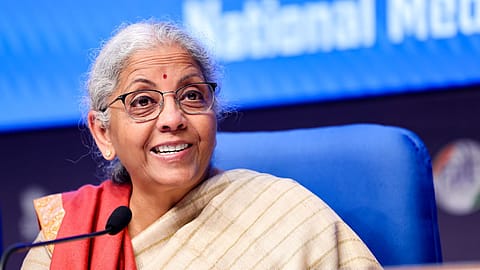Budget 2025 has fuelled an FMCG rally, but can big brands reclaim lost ground?
While aspirational urban consumers had started switching to new-age direct-to-consumer brands, there was a shift to premium offerings of regional brands in semi-urban and rural areas

FMCG stocks witnessed an upward swing soon after Finance Minister Nirmala Sitharaman presented the Union Budget 2025 this afternoon. This was an obvious celebratory reaction to the generous tax sops announced by the FM, which implies that the average Indian consumer would consume more. Over 80% of India is in the sub-₹12 lakh per annum salary bracket and the announcement that Indians who earn up to ₹12 lakh wouldn’t have to pay taxes is certainly a welcome move. However, the biggest challenge for these consumer goods companies would be to recover their lost ground.
Large consumer goods companies have been complaining of low volume growth quarter after quarter because the belly of India hasn’t been consuming enough. It was first rural India that reported a consumption slowdown and when rural started showing green shoots, the urban consumers came under the grip of a slowdown. On one hand, companies were forced to take price hikes due to rising commodity prices, while on the other, there was nothing great happening in terms of salary hikes or job creation. Economists and analysts started talking about a K-shaped recovery after the pandemic where the rich were becoming richer. Consumer goods manufacturers responded to this trend by premiumising. The irony, however, is that while the aspirational urban consumers started switching to new-age direct-to-consumer (D2C) brands (the performance of which is not covered by research agencies), in semi-urban and rural areas, there was a shift to the premium offering of regional brands. While an Ariel or Surf Excel consumer switched to a premium offering of a brand like Ujjala and a Kellog cornflakes consumer opted for brands such as Zerobeli, there were enough takers for regional variants even in categories such as premium mosquito repellent. These brands offered premium products at competitive prices and consumers lapped them up. It is not that these regional brands were not impacted by the inflationary environment. They were able to do it as their overhead costs were low, and more importantly, they understood the local consumer well enough to come up with products that he/she was looking for.
Consumers opting for premium regional variants or preferring D2C in the urban market means that the latter are not just growing at the expense of the large national brands, but also that the Indian consumer’s appetite to consume premium products is on the rise. What would this mean for the large consumer goods companies now that the average Indian is likely to have more money to spend? The big companies need to pull up their socks. “Most big companies during inflation reduce grammage. Then you suddenly see a local brand which is of good quality being launched at a good price with no grammage cuts. The bigger companies have to customise profitable, new-age products which will [appeal] to 300-400 million consumers,” explains Madan Sabnavis, chief economist, Bank of Baroda.
“A lot of large FMCG companies keep saying that there is a demand problem; I don’t find it to be true,” says Sachidananda Shukla, chief economist, L&T. “Demand may be uneven, but there isn’t complete lack of demand. If you see the capital markets story, the mid-caps and small-caps have done well because a lot of the smaller or regional players have benefitted because of their competitive advantages,” Shukla adds.
In fact, Rohit Jawa, CEO & MD, Hindustan Unilever, recognises the shift in consumption pattern—the average Indian consumer’s appetite to premiumise. “Whether it is real wage growth or inflation, we can’t control the macros. The government is already doing the right things. What we can do is do what’s right for our consumers. What we believe we can do in this market condition is to make our brands unmissable, grow competitively, and keep investing in the future by doing the right things in a strategic, disciplined way. The real game is not this quarter or the next quarter; the real game is a long-term game. India is the best consumer story of the world and we are investing for a pie of that future. I would be careful not to get too caught in the near-term business,” Jawa said during the company’s recent Q3FY24 earnings call.
“The things companies need to watch out for is recalibrate some of their brands and offerings in order to make the affordable segment more profitable in their marketing plan. Secondly, accelerate the journey of premiumisation because there is clearly an opportunity there,” advised Nestlé India chairman and MD,Suresh Narayanan in a recent interview with Fortune India.
The larger FMCG companies definitely need to work harder to get the consumers they have lost to D2C and regional brands back into their fold. Identifying gaps and aggressive innovation would be the game changer.